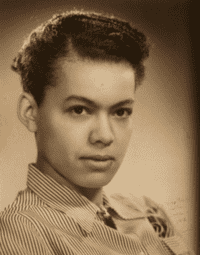 In 1944 Pauli Murray first coined the term “Jane Crow” to describe her experiences as a black, female law student studying at Howard University in Washington, D.C. In her senior thesis “Should the Civil Rights Cases and Plessy Be Overruled?” Murray argues that Plessy v Ferguson was inherently biased and ultimately worked in counter to the public's interest in integration. In time those same arguments would come to shape and guide decisions made by Thurgood Marshall and Ruth Bader Ginsburg.
In 1944 Pauli Murray first coined the term “Jane Crow” to describe her experiences as a black, female law student studying at Howard University in Washington, D.C. In her senior thesis “Should the Civil Rights Cases and Plessy Be Overruled?” Murray argues that Plessy v Ferguson was inherently biased and ultimately worked in counter to the public's interest in integration. In time those same arguments would come to shape and guide decisions made by Thurgood Marshall and Ruth Bader Ginsburg.
As a gender non-conforming woman with self-admitted attraction to other women, Murray is one of the most important queer women that the bulk of the LGBT community routinely fails to call out as being one of its champions. Writing for Salon Brittney Cooper explains that were she to have had cultural and ideological access to modern terminology, there's a believable chance that Murray would have identified as transgender:
“That terminology was not available to Murray in the 1930s and 1940s, since it was not invented until the 1950s,” Cooper describes. “Like so many other facets of Murray's life, she was a couple of decades ahead of her time.”
Cooper continues:
“Throughout her life she chose to openly pursue passionate, romantic partnerships and friendships with women. She was never in the closet; her family and friends and other civil rights leaders knew of her queer identity. But by the 1950s, Murray was an established and up-and-coming civil rights attorney. That, coupled with her past participation with the Communist Party in her early adulthood, made her a target of the Red Scare. By the time she wrote her autobiography, “Song in a Weary Throat,” she wiped all mention of her same-sex relationships from explicit mention in the text, though she left clear traces of these interactions and struggles in her archives.”



